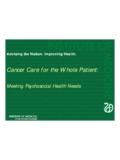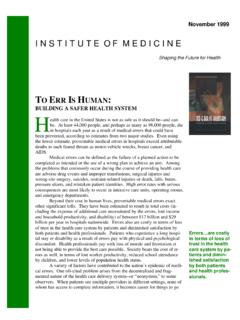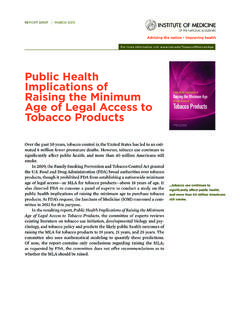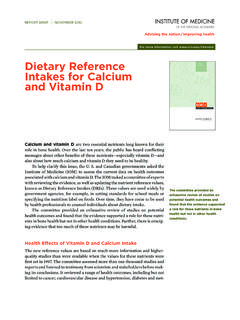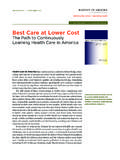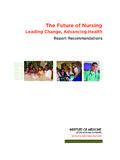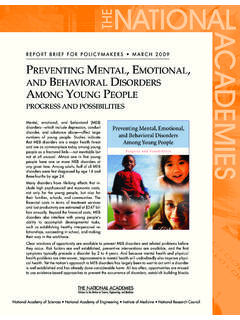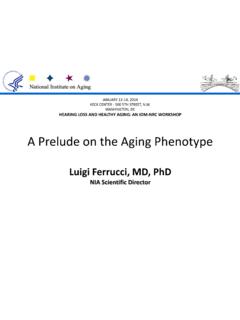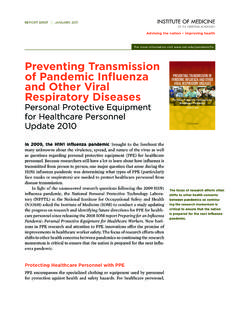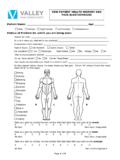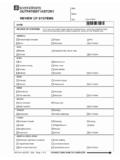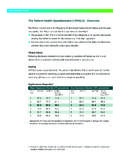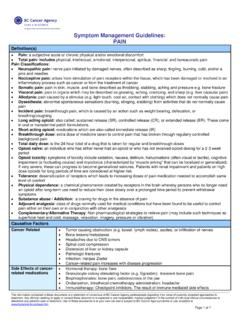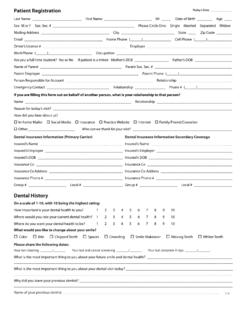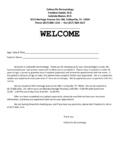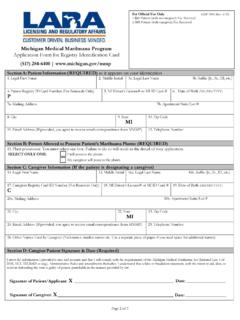Transcription of Crossing the Quality Chasm: A New Health System …
1 March 2001 I N S T I T U T E O F M E D I C I N E Shaping the Future for Health Crossing THE Quality chasm : A NEW Health System FOR THE 21ST CENTURY The Health care delivery System does not provide consistent, high- Quality medical care to all people. Americans should be able to count on receiving care that meets their needs and is based on the best scien tific knowledge--yet there is strong evidence that this frequently is not the case. Health care harms patients too frequently and routinely fails to deliver its potential benefits. Indeed, between the Health care that we now have and the Health care that we could have lies not just a gap, but a chasm . A number of factors have combined to create this chasm . Medical sci ence and technology have advanced at an unprecedented rate during the past half-century. In tandem has come growing complexity of Health care, which today is characterized by more to know, more to do, more to manage, more to watch, and more people involved than ever before.
2 Faced with such rapid changes, the nation s Health care delivery System has fallen far short in its ability to translate knowledge into practice and to apply new technology safely and appropriately. And if the System cannot consistently deliver to-day s science and technology, it is even less prepared to respond to the ex traordinary advances that surely will emerge during the coming decades. The public s Health care needs have changed as well. Americans are living longer, due at least in part to advances in medical science and technol ogy, and with this aging population comes an increase in the incidence and prevalence of chronic conditions. Such conditions, including heart disease, diabetes, and asthma, are now the leading cause of illness, disability, and death. But today s Health System remains overly devoted to dealing with acute, episodic care needs. There is a dearth of clinical programs with the multidisciplinary infrastructure required to provide the full complement of services needed by people with common chronic conditions.
3 The Health care delivery System also is poorly organized to meet the challenges at hand. The delivery of care often is overly complex and uncoor dinated, requiring steps and patient handoffs that slow down care and de-crease rather than improve safety. These cumbersome processes waste re-sources; leave unaccountable voids in coverage; lead to loss of information; Faced with such rapid changes, the nation s Health care delivery System has fallen far short in its ability to translate knowledge into practice and to ap ply new technology safely and appro priately. CARE System Supportive payment and regulatory en vironment Organizations that facilitate the work of patient-centered teams High perform ing patient-centered teams Outcomes: Safe Effective Efficient Personalized Timely Equitable REDESIGN IMPERATIVES: SIX CHALLENGES Reengineered care processes Effective use of information technologies Knowledge and skills management Development of effective teams Coordination of care across patient-conditions, services, sites of care over time Making change possible.
4 And fail to build on the strengths of all Health professionals involved to ensure that care is appropriate, timely, and safe. Organizational problems are particularly apparent regarding chronic conditions. The fact that more than 40 percent of people with chronic conditions have more than one such condition argues strongly for more sophisticated mechanisms to coordinate care. Yet Health care organizations, hospitals, and physician groups typically operate as separate silos, acting without the benefit of complete information about the patient s condition, medical history, services provided in other settings, or medications provided by other clinicians. Strategy for Reinventing the System Bringing state-of-the-art care to all Americans in every community will require a fundamental, sweeping redesign of the entire Health System , according to a report by the Institute of Medicine (IOM), an arm of the National Academy of Sciences. Crossing the Quality chasm : A New Health System for the 21st Century, prepared by the IOM s Committee on the Quality of Health Care in America and released in March 2001, concludes that merely making incremental improvements in cur-rent systems of care will not suffice.
5 The committee already has spoken to one urgent care problem--patient safety--in a 1999 report titled To Err is Human: Building a Safer Health System . Concluding that tens of thousands of Americans die each year as a result of pre ventable mistakes in their care, the report lays out a comprehensive strategy by which government, Health care providers, industry, and consumers can reduce medical errors. Crossing the Quality chasm focuses more broadly on how the Health sys tem can be reinvented to foster innovation and improve the delivery of care. To-ward this goal, the committee presents a comprehensive strategy and action plan for the coming decade. Six Aims for Improvement Advances must begin with all Health care constituencies-- Health professionals, federal and state policy makers, public and private purchasers of care, regulators, organization managers and governing boards, and consumers--committing to a 2 Advances must begin with all Health care con committing to a national statement of national statement of purpose for the Health care System as a whole.
6 In making this commitment, the parties would accept as their explicit purpose to continually reduce the burden of illness, injury, and disability, and to improve the Health and functioning of the people of the United States. The parties also would adopt a shared vision of six specific aims for improvement. These aims are built around the core need for Health care to be: Safe: avoiding injuries to patients from the care that is intended to help them. Effective: providing services based on scientific knowledge to all who could benefit, and refraining from providing services to those not likely to benefit. Patient-centered: providing care that is respectful of and responsive to in dividual patient preferences, needs, and values, and ensuring that patient values guide all clinical decisions. Timely: reducing waits and sometimes harmful delays for both those who receive and those who give care. Efficient: avoiding waste, including waste of equipment, supplies, ideas, and energy.
7 Equitable: providing care that does not vary in Quality because of personal characteristics such as gender, ethnicity, geographic location, and socioeconomic status. A Health care System that achieves major gains in these six areas would be far better at meeting patient needs. Patients would experience care that is safer, more reliable, more responsive to their needs, more integrated, and more available, and they could count on receiving the full array of preventive, acute, and chronic services that are likely to prove beneficial. Clinicians and other Health workers also would benefit through their increased satisfaction at being better able to do their jobs and thereby bring improved Health , greater longevity, less pain and suffering, and increased personal productivity to those who receive their care. Ten Rules for Redesign To help in achieving these improvement aims, the committee deemed that it would be neither useful nor possible to specify a blueprint for 21st-century Health care delivery systems.
8 Imagination abounds at all levels, and all promising routes for innovation should be encouraged. At the same time, the committee formu lated a set of ten simple rules, or general principles, to inform efforts to redesign the Health System . These rules are: 1. Care is based on continuous healing relationships. Patients should re ceive care whenever they need it and in many forms, not just face-to-face visits. This implies that the Health care System must be responsive at all times, and ac cess to care should be provided over the Internet, by telephone, and by other means in addition to in-person visits. 2. Care is customized according to patient needs and values. The System should be designed to meet the most common types of needs, but should have the capability to respond to individual patient choices and preferences. 3. The patient is the source of control. Patients should be given the nec-A Health care sys tem that achieves major gains in these six areas would be far better at meeting patient needs.
9 The Health care System must be responsive at all times, and access to care should be provided over the Internet, by tele phone, and by other means in addition to in-person visits. 3 Reducing risk and ensuring safety require greater at tention to systems that help prevent and mitigate er rors. To initiate the pro cess of change, Congress should establish a Health Care Quality Inno vation Fund essary information and opportunity to exercise the degree of control they choose over Health care decisions that affect them. The System should be able to accom modate differences in patient preferences and encourage shared decision making. 4. Knowledge is shared and information flows freely. Patients should have unfettered access to their own medical information and to clinical knowl edge. Clinicians and patients should communicate effectively and share informa tion. 5. Decision making is evidence-based. Patients should receive care based on the best available scientific knowledge.
10 Care should not vary illogically from clinician to clinician or from place to place. 6. Safety is a System property. Patients should be safe from injury caused by the care System . Reducing risk and ensuring safety require greater attention to systems that help prevent and mitigate errors. 7. Transparency is necessary. The System should make available to pa tients and their families information that enables them to make informed decisions when selecting a Health plan, hospital, or clinical practice, or when choosing among alternative treatments. This should include information describing the System s performance on safety, evidence-based practice, and patient satisfaction. 8. Needs are anticipated. The System should anticipate patient needs, rather than simply react to events. 9. Waste is continuously decreased. The System should not waste re-sources or patient time. 10. Cooperation among clinicians is a priority. Clinicians and institutions should actively collaborate and communicate to ensure an appropriate exchange of information and coordination of care.
